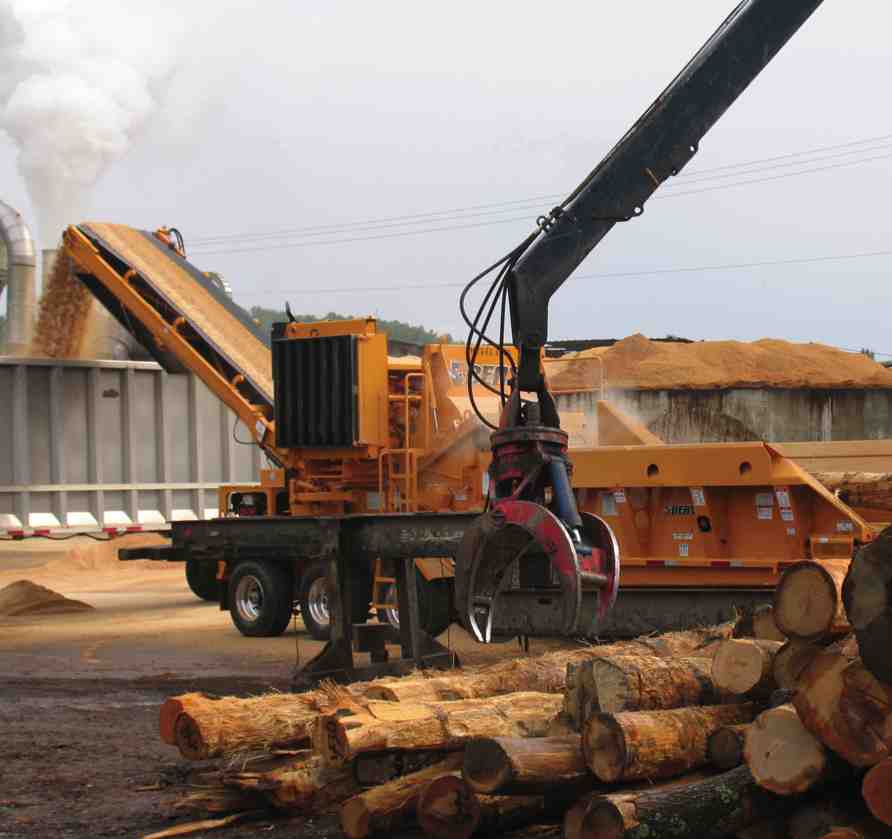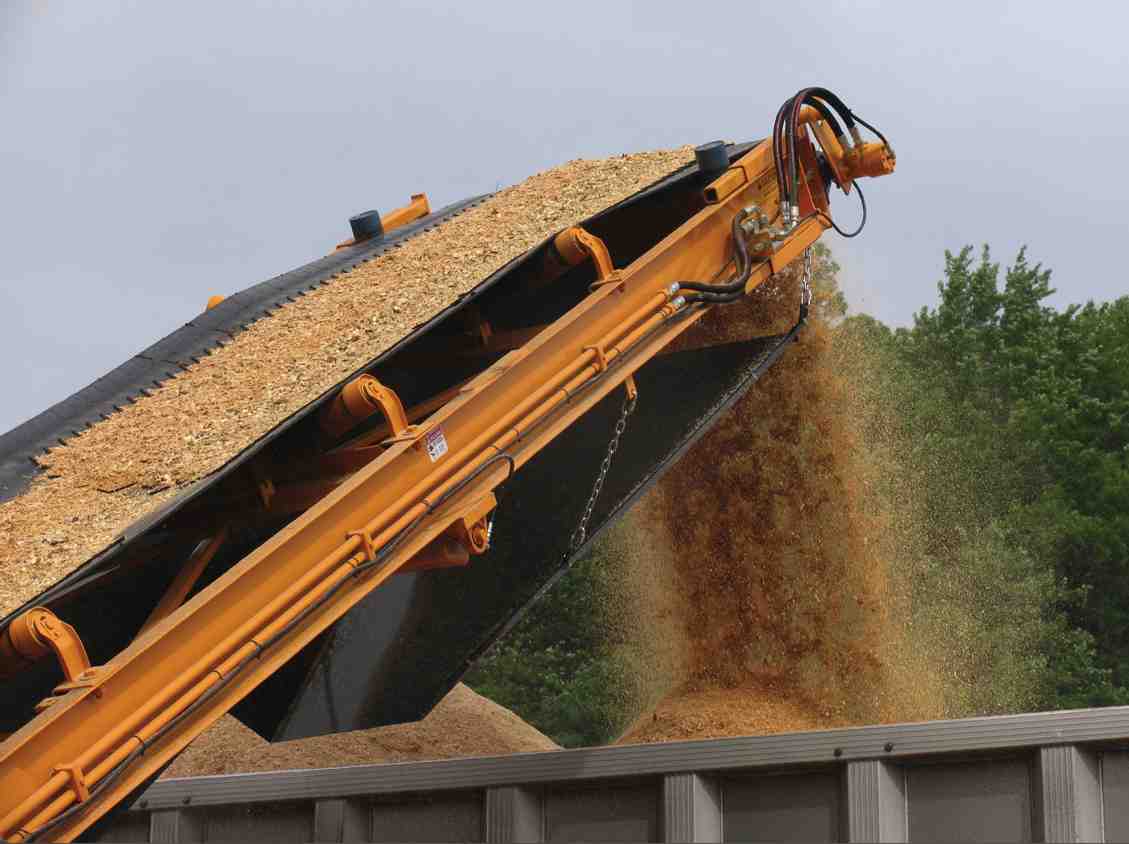
Sawdust without the saw
December 8, 2009
By Canadian Biomass
 NEW PRODUCT
NEW PRODUCT
Sawdust without the saw
To meet the growing demand for minuscule wood fibre, Bandit
Industries has developed new technology that allows a quarter-inch or less
sawdust-type material to be produced from debarked
roundwood in a single pass.
 |
Dec. 8, 2009 – Increased demand for wood pellets and decreased supply of raw
material from sawmills has led to some recent challenges in the renewable
energy marketplace. To meet the growing demand for minuscule wood fibre, Bandit
Industries has developed new technology that allows a quarter-inch or less
sawdust-type material, called bio-sawdust, to be produced from debarked
roundwood in a single pass. Benefits of this new system include good fuel
efficiency, high production levels in pellet mills, and the potential for
expansion into biofuel and bioelectricity production.
Because the process used to produce bio-sawdust is a cutting action, as opposed the
beating action used in hogs and hammermills, far less energy is consumed in
producing the fine material. When using a diesel-powered Beast, up to three
tons of material can be produced per gallon of diesel fuel consumed.
Additionally, the wood fibres are cut, not fractured. Pellet operations report that this type
of material packs much more efficiently into the pellet dies, yielding greater
production. Pellet operations in British Columbia receiving material from the
Beast are reporting a 10 to 12% increase in production at the pellet mills when
running material from the Beast compared to other grinders.
In another application, a stationary unit with electric power is regrinding all of
the material that comes to the pelleting operation before the material goes to
the hog. By using the cutting system in the Beast, the amount of energy
required to size the material is reduced.
The chipping application is ideal when the material is relatively clean and free of
stones and dirt. Producing fine material is also possible when processing
dirtier materials such as material in raked slash piles. Carbide cutting teeth
and/or splitting teeth are used for these applications, which are far more
efficient tools for processing the materials than a grinding tooth because of
the cutting characteristics. The material produced is much more uniform in size
and finer in consistency than the material from a typical grinder, but larger
than the bio-sawdust chip.
The secret to producing bio-sawdust is in the patented design of the cutterbody in
the Beast Recyclers. The cutterbody is shaped like a sawtooth on a chain saw,
which allows the chipping system to make a precise, regulated cut. The material
entering the Beast is also controlled by the infeed system, which forwards
material to the cutting system at the exact speed required to produce the
desired chip length. The screening system, which is standard in all Beast
Recyclers, keeps end-cuts and slivers inside the chamber until the material is
properly sized. When producing bio-sawdust, the chipping operation generally
yields better than 95% acceptable material (quarter-inch or less) in one pass.
Similar results are achieved in regrind applications when processing chips and
hogged material.
The uses for bio-sawdust will likely expand as more applications are tested.
Potential uses include woodchip-fired boilers, home chip-heating systems,
gasification, and biofuel production.
www.banditchippers.com, freesample@banditchippers.com, 1-800-952-0178